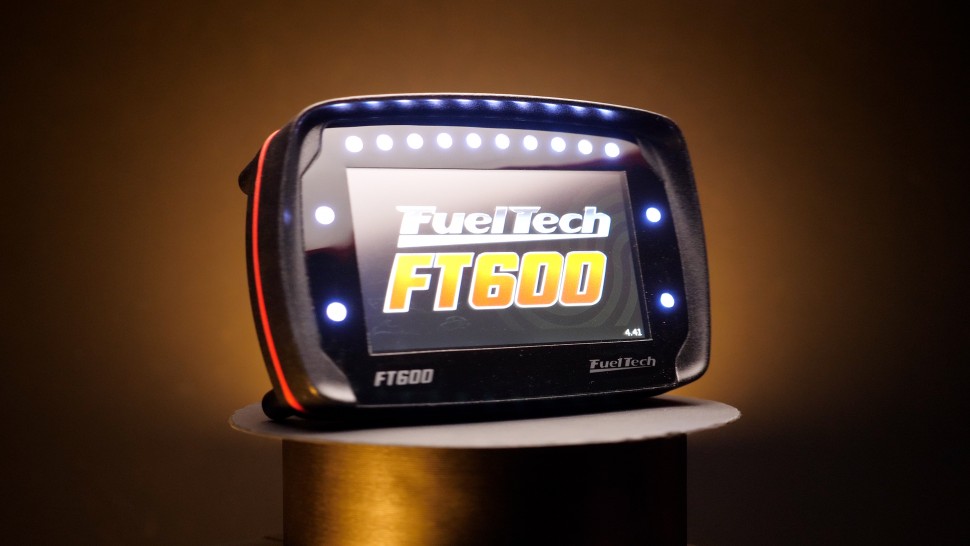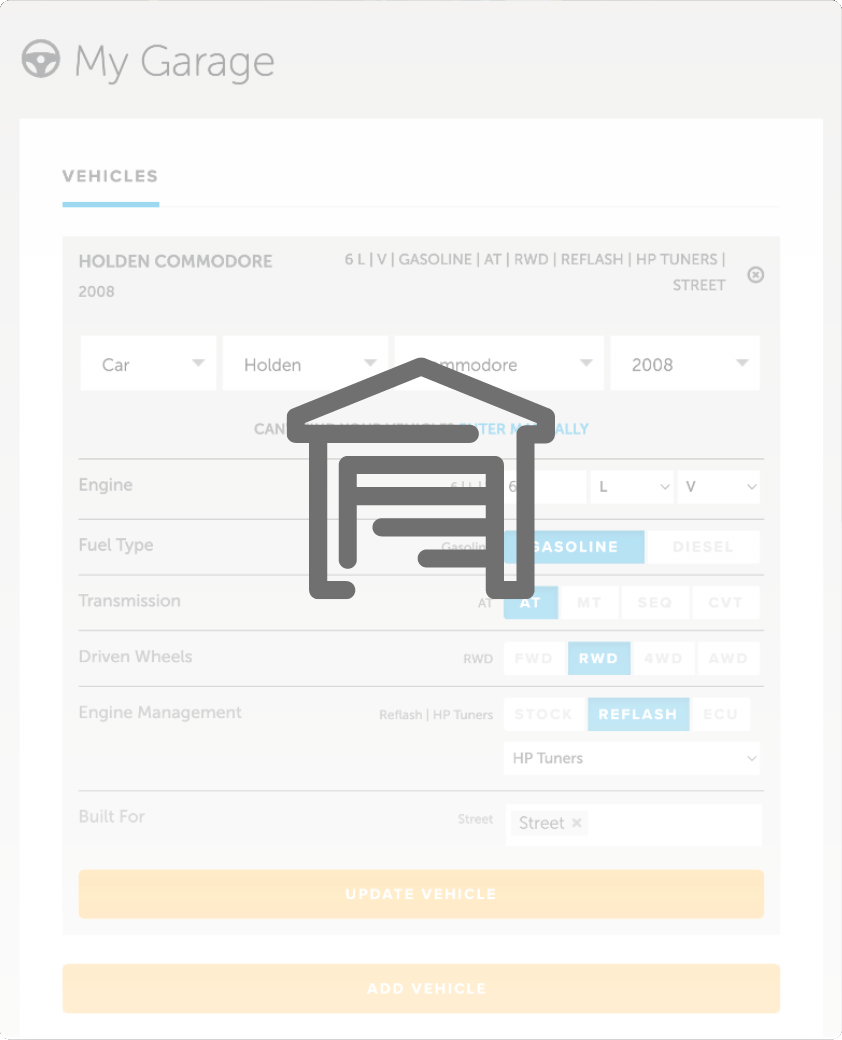| 00:00 |
With partial throttle upshifts and a more basic control strategy covered, it's now time to look at a more modern example with a lot more gears.
|
| 00:08 |
This is a 2019 Ford F-150 V6 Twin Turbo with a 10 or 80 10-speed automatic transmission.
|
| 00:17 |
With this software version, we can see 18 upshift maps, even more downshift maps, plus coast down maps, wide open throttle shift maps, and more.
|
| 00:29 |
While this looks a lot more complex, don't get overwhelmed.
|
| 00:33 |
I started off with a more simple example to illustrate the process of determining which table is active at what time, then how to adjust each individually, and these steps can still be used to figure that out when we have more options.
|
| 00:48 |
Just take it one step at a time.
|
| 00:50 |
In this case, some of these tables are associated with drive modes like Eco, Sport, Mud, Sand, Snow, and Tow Haul.
|
| 00:59 |
Then there are additional inferred modes like Hill Descent and Inferred Grades 1 and 2.
|
| 01:04 |
These may activate on their own when the TCM interprets that road conditions indicate we're traveling down or uphill and how severe the hill is.
|
| 01:13 |
Then we'll see 4x4 or 4x4L or Low modes.
|
| 01:17 |
These are only active if the driver switches the vehicle into those drivetrain modes.
|
| 01:22 |
That selection may be performed with a secondary shift lever, buttons, infotainment system selection, or other means.
|
| 01:30 |
We also have an ABS mode and traction control mode.
|
| 01:34 |
Their names suggest they may take precedence during anti-lock brake intervention or traction control intervention during a loss of traction.
|
| 01:44 |
Since those are safety systems, let's leave them alone unless we're working with a competition use only race vehicle and we're absolutely certain of our changes.
|
| 01:53 |
Safety systems are generally designed to work as a unit, so altering any portion of the system can have unexpected and unwanted results.
|
| 02:02 |
Next, we have a few cooling red tables, which are like the hot table in the Tahoe.
|
| 02:07 |
Again, these only come into play when the transmission overheats.
|
| 02:11 |
Lastly, we have select shift OSS, which goes a step beyond what we're discussing here.
|
| 02:16 |
At this point, we've already ruled out the need to touch a lot of tables and things are hopefully starting to feel more manageable.
|
| 02:23 |
Now, let's open the base upshift map.
|
| 02:26 |
Right away, we see a few differences from the older Tahoe tune.
|
| 02:30 |
Of course, there are more columns since there are more gears in this transmission, and we also find the accelerator pedal position or APP for short is labeled on the y-axis and has been used instead of throttle position.
|
| 02:44 |
Of note is the table name says TPS, but the axis label says accelerator pedal position.
|
| 02:52 |
When this happens, I usually defer to the axis label inside the table, but asking the software provider whether the table is really APP or TPS based to get clarification if they can provide it may shortcut your efforts.
|
| 03:08 |
That said, sometimes it's quicker to do a little road test while data logging and see if the vehicle behavior matches the table data based on APP or TPS.
|
| 03:18 |
Another big difference is there are two columns for most gears rather than one.
|
| 03:22 |
This allows for an upshift of one or two gears at once, which is more common on high gear count automatics.
|
| 03:30 |
And lastly, all our Z data values in the table are quite large.
|
| 03:35 |
Instead, of being minimum vehicle speeds to upshift at, here we have minimum transmission output shaft speeds.
|
| 03:42 |
The tables are noted as being OSS based and OSS stands for output shaft speed.
|
| 03:50 |
If any of these terms are new to you or you haven't calculated them before, don't fret.
|
| 03:56 |
As a reminder, output shaft speed can be determined by simply dividing transmission input speed by the current transmission gear ratio.
|
| 04:06 |
That makes the output shaft speed in this table the shaft speed after transmission gear ratio, but prior to transfer gears and final drive.
|
| 04:16 |
I've specified this rather than simply saying the output shaft speed is the speed of the shaft coming out of the transmission because on some vehicles, the transfer case and transmission are part of one big assembly and some call the complete assembly a transmission.
|
| 04:33 |
This can confuse things since the output of the entire assembly has gone through not just the transmission, but also the transfer case.
|
| 04:41 |
You can always check with your software provider, but in most cases when you see a shift schedule table where you're entering output shaft speeds, you're dealing with the output of the transmission before transfer gears.
|
| 04:54 |
In some cases, transfer gears have a one -to-one ratio, so they don't actually impact speed, but if they're not one-to -one, then we need to keep this in mind.
|
| 05:03 |
If you want to work output shaft speeds or OSSs for short back to transmission input speed because you're more comfortable working in values that more closely resemble engine speed, you can multiply the OSS by the current transmission gear ratio.
|
| 05:18 |
Let's look at an example now.
|
| 05:20 |
I've looked up the gear ratios for the 10R80 and found the first gear is approximately 4.7 to 1.
|
| 05:27 |
Perhaps you test drove the vehicle and noticed in first gear it upshifted at about 3,000 rpm engine speed and you want to change that.
|
| 05:35 |
If the torque converter clutch was locked up, transmission input speed will match engine speed.
|
| 05:41 |
If the converter was unlocked but not slipping significantly, this is still pretty straightforward.
|
| 05:48 |
You can divide the approximate 3,000 rpm transmission input speed by 4.7 to get 638 rpm output shaft speed.
|
| 05:58 |
Then look at the table to see what accelerator pedal position would cause an upshift out of first gear at that 638 rpm output shaft speed.
|
| 06:08 |
In the one-to-two upshift column, we can see at just over 35% accelerator position, we'd upshift at that 638 rpm OSS.
|
| 06:18 |
If you'd like another 200 rpm engine speed before that shift, you can divide 200 by the 4.7 gear ratio to get 42.5 and add 42 .5 to the output shaft speed.
|
| 06:33 |
As always, remember to adjust adjacent values to keep them trending in a reasonable fashion and look to see if raising these values will cause a different upshift request to happen before this one.
|
| 06:46 |
As we scan down this column, we pass a block of values set to 3,000 rpm output shaft speed.
|
| 06:53 |
This block is used to essentially defer to the next column by preventing a one-to-two upshift when accelerator pedal position is in the 15 to 27.5% range.
|
| 07:05 |
If your axis values are interpolated, and they usually are, it would also be unlikely that accelerator pedal positions of 14 or 28% would be able to cause a one -two upshift as well because the interpolated table values at those pedal positions would be less than 3,000 but still too high to achieve.
|
| 07:28 |
Next,, let's scan down to the one-to-three upshift column.
|
| 07:32 |
Here we have values of 625 and 645 at 27.5 and 30% accelerator pedal position, and our calculated output shaft speed of 638 fits right in there.
|
| 07:47 |
So, we've actually found two different steady state accelerator pedal positions that could have resulted in an upshift at an OSS of 638.
|
| 07:59 |
By steady state accelerator pedal position, I mean if we take off from a stop and then immediately hold the accelerator pedal perfectly still at a certain position, the following is what would happen.
|
| 08:11 |
If we're at about 29% accelerator pedal, we'll upshift from first to third, or if we're around 36% accelerator pedal position, we'll upshift from first to second gear at 638 RPM output shaft speed.
|
| 08:27 |
You may have noticed there's one or more pair of cells which seems they may encompass an OSS of 638.
|
| 08:35 |
In the first to third upshift column, we have a value of 650 followed by a value of 360.
|
| 08:43 |
638 is between those values, but because both cells have a visible axis value of 5% pedal, it's a bit unclear how the TCM would handle this.
|
| 08:53 |
In some cases, you run across values that seem the same at first glance, but differ slightly when you look closer.
|
| 09:01 |
I've used the HP Tuners feature here, which allows me to increase the visible precision to 20 digits after the decimal point.
|
| 09:10 |
This allows me to verify these fives both have zeros after them, so they appear to be the same value rather than one being slightly higher than the other, which could make the behavior more clear.
|
| 09:23 |
Generally, speaking, having two access points with the same value in them is a no -no because it may cause unexpected behavior as the module may not know which value to use.
|
| 09:35 |
In this case, because this is a known good OEM stock calibration, I believe the internal TCM logic has some mechanism for choosing between one data point and the other.
|
| 09:48 |
I suspect this allows for interpolation between the 0% and 5% APP values, then an immediate jump to interpolation between 5 and 7% APP if the driver increases pedal position from 0 to more than 5%.
|
| 10:05 |
When reviewing data points like this which seem a bit unclear or confusing, sometimes it helps to take a step back from the data and consider real-world operation.
|
| 10:15 |
To get up to an output shaft speed of 638 RPM, we'd start from a stop, which is 0 RPM OSS, and accelerate up from there.
|
| 10:24 |
If we're operating at around 5% accelerator pedal position, where this unclear data exists, we'd trigger a 1-2 upshift around 365 to 380 RPM OSS, long before getting to 638 anyway.
|
| 10:41 |
All this to say, when we run into data which isn't immediately clear, sometimes it helps to take a moment and think about whether that area is one we'd ever encounter.
|
| 10:51 |
Then, based on that, we can decide whether it's worth continuing to investigate further or not.
|
| 10:58 |
On top of that, if the data is OEM, while it may not immediately make sense to you, it's been done for a reason.
|
| 11:05 |
I've talked about driving at a fixed throttle angle for a bit, but much of our driving involves varying the accelerator pedal position.
|
| 11:13 |
Even while cruising at a relatively constant speed, we're still often manipulating the accelerator pedal up and down by a few percent.
|
| 11:21 |
But what if we vary throttle more drastically? Let's say we apply 50% accelerator pedal position from a stop.
|
| 11:28 |
We can see the 1-2 upshift column requires OSS of 880 RPM to upshift.
|
| 11:36 |
The 1-3 column is set at 3000, preventing a 1-3 upshift from occurring at that APP.
|
| 11:44 |
Since we've gone from a small accelerator input up to 50% APP, we've accelerated up to 780 RPM output shaft speed, and now we suddenly lift off the accelerator to 20%.
|
| 11:58 |
As we're lifting the pedal, the APP percentage is reducing.
|
| 12:04 |
That 780 OSS quickly becomes sufficient for a 1-2 upshift at just below 45% APP.
|
| 12:13 |
Remember, these output shaft speeds are the minimum required to execute the upshift associated with that gear.
|
| 12:20 |
Let's give the 1-2 upshift a rest now and look at the rest of the table.
|
| 12:24 |
One thing that stands out, thanks to the temperature coloring of the data, which makes higher values seem more red and smaller values appear more green, is these orange columns full of a value of 7000 RPM OSS.
|
| 12:38 |
We can see the single gear upshifts from 5 -6, 6-7, 7-8, etc.
|
| 12:45 |
Have more typical values in them, but the skip shifts from 5-7, 6-8, 7-9, and so on have the 7000s in them.
|
| 12:56 |
When we look at the data in the single shift columns, like the 5-6 shift, we see a max OSS of 3965, so 7000 is quite far out of range.
|
| 13:08 |
Perhaps skip shifting in these higher gears has been disabled on purpose through the use of an impossibly high minimum OSS for the shift to be requested.
|
| 13:18 |
When we look at the 7-8 column, however, the peak value of 6050 is getting closer to 7000, and then the 8-9 shift column actually has values of 7025.
|
| 13:30 |
So, let's do a little math and see if we can achieve an OSS of 7000 in these gears rather than possibly making an incorrect assumption.
|
| 13:40 |
Let's say peak engine speed achievable is 6500 RPM with this engine.
|
| 13:45 |
This would mean peak transmission input RPM is also 6500, though in practice it would be less than that if the converter is slipping.
|
| 13:55 |
A 6500 RPM input speed divided by the 7th gear ratio of 1.0 is 6500.
|
| 14:03 |
Now, we've confirmed we can't get to a 7000 RPM OSS in 7th gear, meaning the 7-9 upshift column being full of the value 7000 is disabling that shift as well.
|
| 14:17 |
5th to 6th gear ratios are shorter than 7th, so now we know those three gears cannot achieve an OSS of 7000, meaning all three gears will not initiate a 2-gear shift based on this table.
|
| 14:32 |
When we get to 8th gear, the ratio is 0 .85.
|
| 14:36 |
6500 RPM divided by 0.85 is 7647, so in 8th gear an OSS of 7000 might be achievable.
|
| 14:48 |
Looking at the 8-9 and 8-10 upshift columns, it seems at an accelerator pedal position of 85% for example, an 8-10 upshift may occur instead of 8-9 upshift.
|
| 15:01 |
But what if the engine could only rev to 5500 RPM, or rev to 5900 but had a loose enough converter that the max transmission input speed would only ever hit 5500 RPM? 5500 RPM divided by 0.85 gear ratio gives a max OSS of 6471.
|
| 15:22 |
If that's the max OSS achievable on our engine with this gear ratio, then we can consider an 8-10 upshift impossible to achieve as well.
|
| 15:33 |
Hopefully at this point, I've given you the tools to identify potential reasoning for very high values in shift schedule tables, and how to determine if they're simply high numbers, or numbers high enough that they're impossible to achieve and are being used to disable a particular behavior.
|
| 15:51 |
If we scan over these columns in the middle of the table, we see certain behaviors prevented at certain accelerator pedal positions, with single gear upshifts being prioritized in some areas, and two gear upshifts used in others.
|
| 16:06 |
No doubt this is more complex than a 4 -speed.
|
| 16:09 |
There's more gears, and a bit more to keep in mind while making changes in order to avoid requesting two different actions based on the same input conditions.
|
| 16:18 |
But with patience and time, you'll find that the process is very similar.
|
| 16:22 |
As we test our changes, we'll hopefully find everything is going to plan, and monitored shifts line up with our understanding of shift schedule tables.
|
| 16:32 |
However,,, at a certain point, if we apply enough throttle, we may find a shift occurs when we don't expect it to.
|
| 16:39 |
Keep in mind many TCMs have wide open throttle, engine speed, or vehicle or output shaft speed tables that may override the behavior in our primary shift scheduling tables.
|
| 16:50 |
Also keep in mind, on drive-by-wire vehicles, accelerator pedal position and throttle angle don't necessarily have to be a one-to-one relationship, and often aren't.
|
| 17:00 |
We may find the tables are called wide open throttle tables, but engage over a certain accelerator pedal position rather than a certain throttle position.
|
| 17:09 |
So,metimes software documentation will make this clear, but sometimes it won't, and we'll need to do a little testing to figure it out ourselves.
|
| 17:17 |
We can test this by driving and observing the minimum accelerator pedal position to achieve full throttle.
|
| 17:23 |
If the wide open throttle shift tables take over, then throttle position would seem to be the deciding factor.
|
| 17:30 |
If the wide open throttle tables don't take over, repeat testing with incrementally higher accelerator pedal inputs until the wide open throttle tables do take over, and then you know what to expect.
|
| 17:44 |
Next, I'm going to open the sport upshift map so we can look at it and compare to the base upshift map.
|
| 17:50 |
Right off the bat, we can see all columns requesting a two-gear shift have OSS values too high to achieve, though they've allowed the behavior for a one-to-three upshift during very gentle acceleration.
|
| 18:03 |
So, for wanting to avoid that skip shift behavior, here we have an OE example of how it's done, and can copy it into other tables if desired.
|
| 18:13 |
Next, if we look at the single gear shift columns at mid to high APP, the values in the sport table are higher.
|
| 18:20 |
As I've mentioned prior, this is typical of a performance transmission calibration.
|
| 18:26 |
The shift points are increased, allowing the engine to rev higher prior to upshifting.
|
| 18:32 |
Let's run some numbers and see what this difference looks like in terms of transmission speed to give us an idea of what the engine speed might be.
|
| 18:41 |
In fifth gear, at 30% accelerator pedal on the base map, we'll upshift to sixth gear at an OSS of 1735, and on the sport map we need an OSS of 1900.
|
| 18:55 |
Fifth gear ratio is 1.52 in this transmission, so 1735 times 1.52 is 2637 RPM.
|
| 19:06 |
1900 times 1.52 is 2888 RPM.
|
| 19:12 |
So, in fifth gear, the sport map will let the transmission input speed go about 250 RPM higher before an upshift.
|
| 19:21 |
While that doesn't sound like a lot, as we test drive the vehicle, we'll hear the difference and likely feel it too.
|
| 19:28 |
The engine will have increased horsepower output at the higher engine speed, combined with the shorter gear ratio being held on to a bit longer, providing improved acceleration and a more sporty feel.
|
| 19:39 |
For an extreme example, now I'll open the 4x4 L shift schedule.
|
| 19:45 |
This one is active while the transfer case is in 4x4 low range, which is only used for low speed operation in extreme conditions.
|
| 19:55 |
Here the values in general are higher.
|
| 19:58 |
The TCM is going to help the engine generate more power by keeping the engine speed up, and help the drivetrain apply more torque by staying in a low gear ratio, which is being lowered even further by the transfer gear ratio.
|
| 20:13 |
Remember, even though the transfer gear ratio isn't impacting these OSS values, it is impacting total gearing, the mechanical advantage torque multiplication applies, and the vehicle speed at which shifts will occur.
|
| 20:29 |
A standard 4x2 or 4x4 transfer mode typically causes no change in gearing, but this particular low range mode has a 2 .64 to 1 transfer gear, so the speed coming out of the transfer case would drop 1,000 RPM OSS to 378 RPM transfer case output speed.
|
| 20:51 |
I get 378 by taking the 1,000 RPM OSS and dividing it by the transfer gear ratio of 2.64.
|
| 21:00 |
Another thing of note is the 1-2 shift column is full of zeros, and the 2-3 and 2 -4 upshift columns have values greater than zero in them.
|
| 21:11 |
This will cause the transmission to be in 2nd gear while the vehicle is stationary, avoiding the use of 1st gear.
|
| 21:19 |
Also, there are reasonable values in the 6 -7 upshift column, but everything after that is set to an OSS of 8,000.
|
| 21:28 |
This would avoid the selection of gears 8 -10 while in this mode.
|
| 21:33 |
While the low range gear selection is an extreme example that may not suit your needs, hopefully it demonstrates how to avoid selecting certain gears, and just how massively we can change behavior with shift scheduling in general.
|
| 21:46 |
At this point, if our TCM has additional upshift tables, it's time to either adjust them to meet our needs, or leave them stock if we've determined they don't need to be altered.
|
| 21:56 |
We'll leave the wide open throttle shift settings for later because there's more to learn before we tackle them, and we should finish the throttle areas before getting to wide open throttle.
|
| 22:07 |
Now, that you've seen a number of upshift examples, we're ready to look at downshift tables.
|





